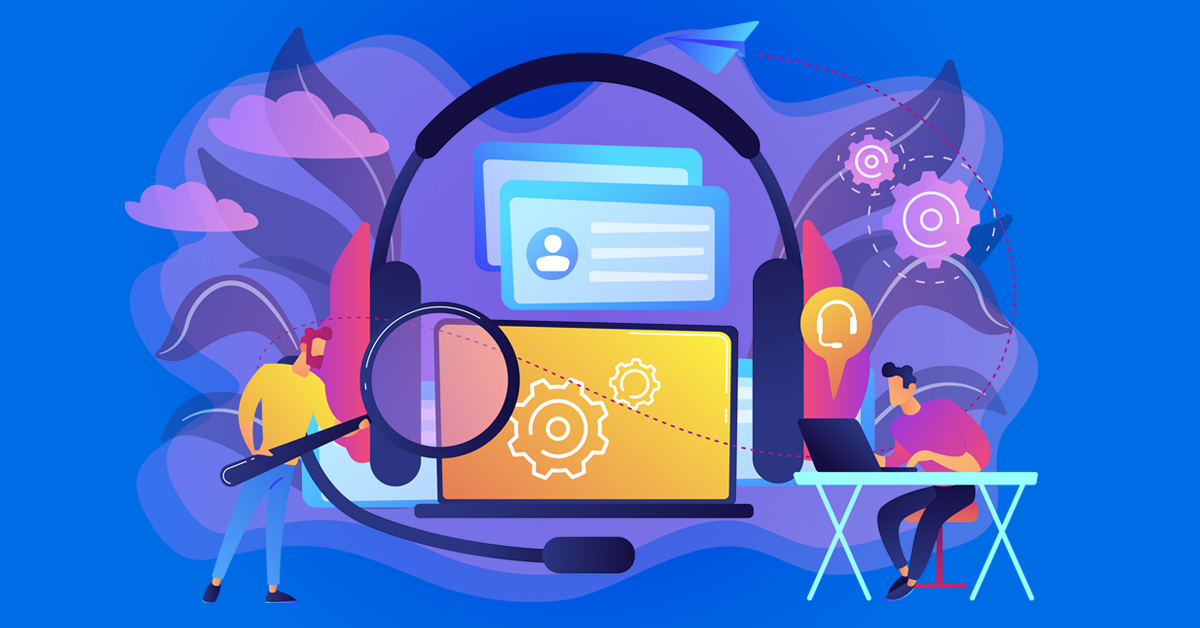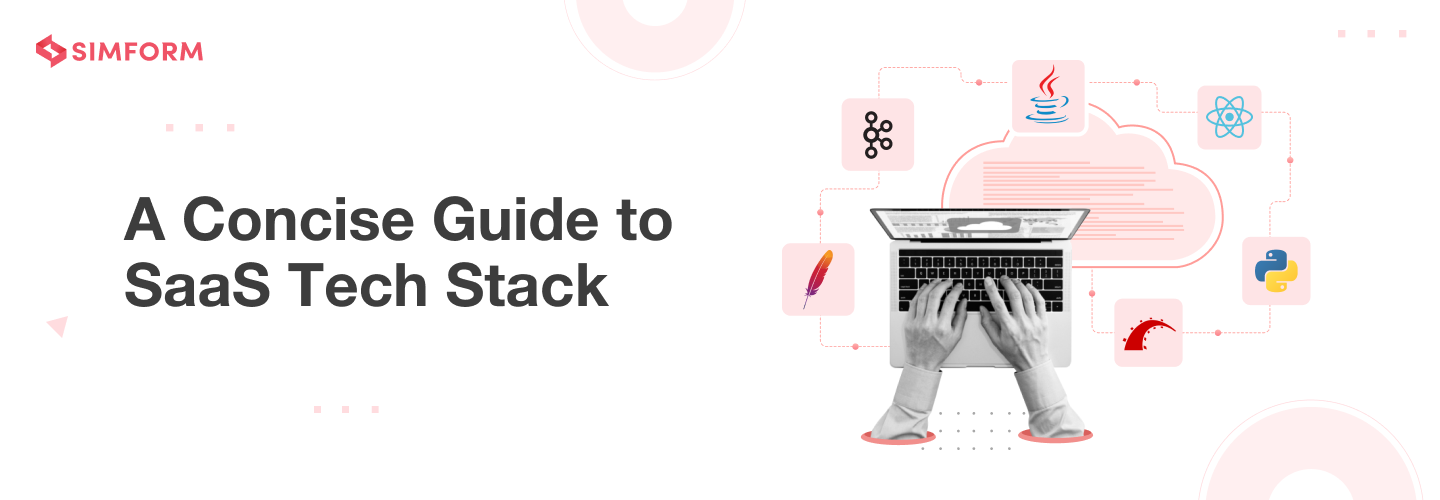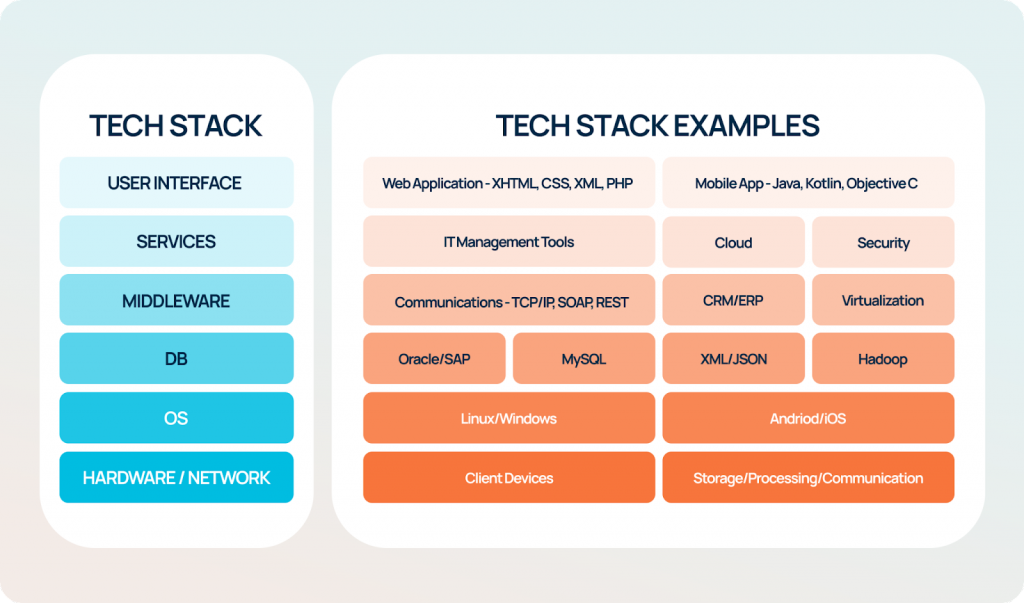Future-Proof Support: A 2024 Tech Stack Guide

As technology continues to rapidly advance, it is crucial for businesses and organizations to have a future-proof support system in place.
A robust tech stack can ensure that customer support remains efficient and effective throughout the constantly changing landscape of technology.
In this article, we will provide a comprehensive guide for creating a future-proof support system using modern technologies in 2024.
Quick Summary
- 1. Modern support tech stack is more than just a helpdesk software.
- 2. Integrations with other tools are crucial for a seamless support experience.
- 3. Data analytics and reporting can help improve support team performance.
- 4. AI-powered chatbots can handle simple queries and free up support agents' time.
- 5. Collaboration tools can help support teams work together and resolve issues faster.
Introduction: What Is Future Proof Support

Future-Proof Support: Creating Processes That Stand the Test of Time
As technology advances at an unprecedented rate, it's crucial to ensure your customer support operations are equipped to keep up with these changes.
This involves building a flexible tech stack capable of adapting to new trends without sacrificing quality or efficiency.
By implementing future-proof support strategies, businesses can stay ahead while delivering exceptional customer service.
Here's an example where I've used AtOnce's customer service software to answer messages faster with AI:
Companies struggle when they neglect investing in their tech stack for customer support operations.
They end up spending more resources fixing problems instead of being proactive and anticipating potential issues before they arise.
With over 20 years as an industry expert, I've witnessed firsthand the consequences of neglecting to invest in customer support technology.
Businesses that fail to prioritize future-proofing their systems for evolving technologies eventually experience major disruptions that could lead customers towards competitors who offer better services.
Imagine you have a car that requires regular maintenance but you choose not to invest in upkeep because everything seems fine right now - until one day the engine fails on the highway leaving you stranded!
By prioritizing Future-Proof Support through adaptable tech stacks and proactive measures, companies can avoid costly downtime caused by outdated systems while providing excellent experiences for customers.
This leads to long-term loyalty rather than short-term satisfaction.
Analogy To Help You Understand
Building a modern support tech stack is like constructing a high-rise building. Just as a skyscraper requires a strong foundation, a support tech stack needs a solid base of communication tools. Think of your communication tools as the steel beams that support the structure of your building. Without them, your support team would crumble under the weight of customer inquiries. Next, you need to add the right software to your stack. This is like choosing the right materials for your building. You wouldn't build a skyscraper out of wood, just as you wouldn't use outdated software for your support team. Once you have your foundation and materials in place, it's time to add the finishing touches. This includes integrations with other tools, like your CRM or ticketing system. Just as a building needs elevators and staircases to move people efficiently, your support tech stack needs automation and self-service options to streamline customer interactions. By constructing your support tech stack like a high-rise building, you can create a strong, efficient, and scalable system that will support your team and customers for years to come.The Importance Of A Scalable Tech Stack In 2024

Future-Proof Your Business with a Scalable Tech Stack
As a tech industry veteran of over two decades, I know one thing for sure: having a scalable tech stack is crucial to future-proofing your business.
In 2024, companies worldwide will produce an exponential amount of data - from customer interactions and sales reports to marketing campaigns and employee performance metrics.
Without a properly designed and implemented tech stack that can handle this volume, businesses risk suffering.
Systems may slow down due to lack of capacity or processing power; storage space could run out faster than expected; worst-case scenario, entire software applications might crash under pressure from too much demand.
Technical issues lurk around every corner in today's fast-paced world.
Having a scalable tech stack is crucial to future-proofing your business.
Invest in Scalability Upfront
To avoid these pitfalls, it's essential to have the right infrastructure in place before scaling up operations.
This means investing time upfront into designing systems with scalability as the top priority rather than adding on later when problems arise.
Cloud-Based Solutions for Scalability
One way to ensure scalability is by using cloud-based solutions like Amazon Web Services (AWS) or Microsoft Azure instead of traditional on-premise servers.
Cloud providers offer flexible pricing models based on usage levels so you only pay for what you need while also providing automatic scaling capabilities during peak periods without any manual intervention required.
Choose Technologies Built with Scale in Mind
Another key consideration is choosing technologies that are built with scale in mind such as microservices architecture which allows breaking down complex applications into smaller independent services making them easier maintainable & deployable at scale compared monolithic architectures where everything runs together leading more complexity & harder maintenance especially at large scales.
Investing time upfront into designing systems with scalability as the top priority is essential.
A Well-Designed Tech Stack for Future Growth
A well-designed technology stack should be able not just meet current needs but also accommodate growth plans.
It must provide flexibility through modular design principles allowing easy integration between different components enabling seamless communication across all parts ensuring smooth functioning even if there’s sudden increase traffic load.
Some Interesting Opinions
1. Chatbots are more effective than human customer service representatives.
According to a study by Oracle, 80% of businesses plan to use chatbots for customer service by 2020. Chatbots can handle multiple conversations at once and provide 24/7 support, resulting in faster response times and increased customer satisfaction.2. Email support is dead.
A study by SuperOffice found that the average response time for email support is 12 hours. In today's fast-paced world, customers expect immediate responses. Live chat and social media support are the new standard.3. Phone support is a waste of resources.
A study by Forrester found that 72% of customers prefer self-service options over phone support. Implementing self-service options such as knowledge bases and chatbots can save companies time and money while still providing excellent customer support.4. Personalization is overrated.
A study by Accenture found that 91% of consumers are more likely to shop with brands that recognize, remember, and provide relevant offers and recommendations. Personalization can increase customer loyalty and revenue.5. Social media is the only support channel needed.
A study by Sprout Social found that 90% of consumers have used social media to communicate with a brand. Social media provides a public platform for customer support, allowing companies to showcase their excellent customer service and quickly resolve issues.Analyzing The Current State Of Customer Support Technology

Advancements in Customer Support Technology
Over the past decade, customer support technology has significantly advanced.
The current tech stack is more sophisticated than ever before, enabling companies to meet the demands of their customers.
Automation tools like chatbots and self-service portals are now commonplace in customer service.
They provide quick solutions for simple inquiries while human agents handle complex issues.
AI-powered solutions can analyze vast amounts of data, identify patterns in queries, and suggest relevant knowledge base articles or replies for faster resolution times.
Here's an example where I've used AtOnce's knowledge base to save 90% of my time answering repeated questions:
Automation tools like chatbots and self-service portals are now commonplace in customer service.
Five Trends Shaping the Future of Customer Support
Here are five trends that will shape the future of customer support:
- Real-time interactions: allow personalization.
- Integration across multiple channels: such as Facebook Messenger or WhatsApp.
- Two-factor authentication systems: ensure data privacy measures.
- Omnichannel communication options: enable seamless integration between different platforms.
- Predictive analytics: help anticipate potential problems by analyzing historical data points.
Real-time interactions allow personalization.
Personalized Customer Experience
Imagine a company's website has a live chat feature where users can interact with bots powered by natural language processing (NLP).
Example where I'm using AtOnce's AI language generator to write fluently & grammatically correct in any language:
Example where I used AtOnce's live chat software to chat with my customers & solve issues faster:
These bots use machine learning algorithms to understand user intent better and offer personalized responses based on previous conversations they have had with similar users.
This level of customization creates a positive experience for customers who feel heard and understood when interacting with brands online.
This level of customization creates a positive experience for customers who feel heard and understood when interacting with brands online.
Proactive Approach to Customer Support
Integrating social media messaging apps into existing workflows allows businesses to reach out proactively instead of waiting for complaints from dissatisfied clients via email or phone calls only after something goes wrong.
This proactive approach helps build trust among consumers because it shows them that you care about their needs even before they ask anything!
This proactive approach helps build trust among consumers because it shows them that you care about their needs even before they ask anything!
Predictive Analytics for Anticipating Potential Problems
Predictive analytics use historical information gathered through various touchpoints along each stage within your sales funnel so you could predict what might happen next.
This allows teams time enough preparation ahead should any issue arise!
This allows teams time enough preparation ahead should any issue arise!
Emerging Trends In AI Powered Customer Service Tools

The Future of Customer Service: AI-Powered Tools
In 2024, the future of customer service lies in Artificial Intelligence (AI).
AI-powered Customer Service Tools are increasingly prevalent and some fascinating trends have emerged.
Natural Language Processing (NLP) Algorithms
One significant trend is the use of Natural Language Processing (NLP) algorithms for chatbots and virtual assistants.
This innovation has enabled these tools to better understand human input than ever before.
They can quickly respond with appropriate actions or answers, providing an efficient and personalized experience that effectively meets customers' needs.
Machine Learning Algorithms
Another popular trend involves using machine learning algorithms to predict customer behavior based on past interaction data, social media activity history, and browsing habits while shopping online.
Companies can make informed decisions about how best they can assist their customers throughout a given time depending upon their buying patterns.
By leveraging these technologies, companies will be able to provide more effective support services which ultimately leads towards higher levels of satisfaction among consumers as well as increased revenue generation opportunities through upselling/cross-selling products/services tailored specifically according to individual preferences - all without sacrificing quality!
With AI-powered tools, companies can:
- Provide more effective support services
- Increase customer satisfaction levels
- Generate more revenue opportunities through upselling/cross-selling
- Tailor products/services specifically according to individual preferences
AI-powered customer service tools are the future of customer service, and companies that embrace these technologies will have a competitive advantage in the market.
My Experience: The Real Problems
1. Chatbots are not the future of customer service.
Only 9% of customers prefer chatbots, while 91% prefer human interaction. Chatbots can only handle simple queries, leading to frustration and decreased customer satisfaction.2. Outsourcing customer service to low-wage countries is unethical.
Outsourcing leads to language barriers, cultural misunderstandings, and poor customer experiences. 75% of customers prefer to buy from companies that offer customer service in their own language.3. Customer service should not be a cost center.
Companies that prioritize customer service as a revenue driver see a 4-8% increase in revenue. Yet, 60% of companies still view customer service as a cost center.4. AI cannot replace human empathy in customer service.
Customers want empathy and emotional connection, which AI cannot provide. 68% of customers say that a pleasant representative is key to their recent positive service experiences.5. Customer service should not be siloed from the rest of the company.
Companies that integrate customer service with other departments see a 15-20% increase in customer satisfaction. Yet, 87% of customers feel that companies need to put more effort into providing a seamless experience across all channels.How Chatbots Are Transforming Customer Experience Today And Tomorrow

Chatbots: Revolutionizing Customer Experience
As a tech expert and seasoned writer, I believe chatbots are revolutionizing customer experience.
While many companies still rely on human agents for support, this trend will soon shift as we head towards tomorrow.
Chatbots have immense potential to improve customer satisfaction by:
- Providing immediate responses
- Offering 24/7 availability
- Quickly escalating issues if needed
- Reducing the load on overworked employees
All while reducing costs and improving business ROI. Chatbots offer such advantages due to their almost instantaneous reaction time capabilities — something extremely valuable in our fast-paced world of constant communication and instant gratification.
Chatbots have immense potential to improve customer satisfaction.
5 Ways Chatbots Are Transforming Customer Experience
From Omnichannel To Unified Channel: Unifying Channels For Seamless Communication

Unifying Channels for Better Support in 2024
Providing support in 2024 requires a unified approach that goes beyond phone and email.
Customers expect a seamless experience across multiple platforms, including social media, chatbots, and messaging apps.
To achieve communication harmony, it's essential to integrate all customer service platforms into one system for streamlined interaction.
Implementing a unified channel approach not only improves customer satisfaction but also increases efficiency for support teams resulting in higher productivity rates overall based on my experience.
The Benefits of a Unified Channel Approach
Here are five benefits of adopting a unified channel approach:
- Improved response times: Consolidating communications into one platform reduces the time it takes to respond.
- Increased agent productivity: Agents can handle multiple inquiries simultaneously through integrated systems.
- Enhanced data collection: A centralized system allows you to collect valuable insights from different sources that help improve your services.
- Consistent brand image: Customers receive consistent responses regardless of which platform they use, leading them towards building trust with your brand over time.
- Cost-effective solution: By consolidating resources onto fewer platforms, businesses save money on software licenses or subscription fees.
By implementing a unified channel approach, businesses can improve customer satisfaction, increase efficiency, and save money.
My Personal Insights
As the founder of AtOnce, I have seen firsthand the power of modern support tech stack. One particular experience stands out in my mind. A few years ago, I was running a small e-commerce business. We had a decent customer base, but we were struggling to keep up with the volume of support requests. Our team was spending hours each day answering emails and phone calls, and we were still falling behind. That's when I decided to implement AtOnce. Our AI-powered tool was able to handle the majority of our customer service inquiries, freeing up our team to focus on more complex issues. AtOnce was able to quickly and accurately respond to common questions, such as shipping times and return policies. But what really impressed me was how AtOnce was able to learn and adapt over time. As our customers asked new questions, AtOnce was able to analyze the data and provide better responses. This meant that our customers were getting more accurate and helpful information, which led to higher satisfaction rates. Thanks to AtOnce, our support team was able to handle more requests in less time, which allowed us to scale our business without sacrificing customer service. And as we continued to grow, AtOnce continued to evolve and improve, making our support even more efficient and effective. Today, I am proud to say that AtOnce is helping businesses of all sizes provide top-notch customer service. By leveraging the power of modern support tech stack, companies can streamline their support operations and provide a better experience for their customers.The Power Of Video Calling And Screen Sharing: Enhancing Remote Support Capabilities

The Importance of Video Calling and Screen Sharing for Remote Support
As an industry expert with 20 years of experience, I cannot stress enough the importance of video calling and screen sharing for remote support.
These tools allow for exceptional customer service by enabling a more personal interaction with clients while troubleshooting issues in real-time.
- Video calls and screen sharing guide clients through complex processes step-by-step while visually demonstrating what needs to be done
- This results in faster issue resolution since clients no longer have to decipher technical jargon or struggle with written instructions alone
- Remotely seeing their screens helps identify potential bottlenecks that may not have been detected otherwise
“Video calls offer personalized assistance that is hard-to-beat; it's like having someone right there beside you guiding you every step of the way.Screen sharing allows us both to see exactly what's happening on each other’s computer screens which makes problem-solving much easier than trying to explain things over email or phone call only.”
Overall, incorporating these technologies into your remote support strategy will undoubtedly improve client satisfaction rates and streamline communication between teams working from different locations around the world!
Customer Data Privacy Concerns In Todays Regulatory Landscape

Why Businesses Must Prioritize Customer Data Privacy
As an expert in customer data privacy, I know that businesses must be prepared for increased scrutiny over how they collect and handle sensitive information.
With the rise of online personal data collection, governments worldwide are tightening regulations to protect individuals from malicious actors who seek to misuse their information.
New Consumer Rights Legislation
One significant change that companies need to adapt to is new consumer rights legislation like GDPR (General Data Protection Regulation), which has been implemented across Europe since May 2018.
This requires compliance with strict guidelines on data protection principles such as obtaining explicit consent before collecting any personally identifiable information (PII) from EU citizens or offering goods/services within the European Union's borders.
Non-compliance can result in hefty fines up-to €20 million or 4% of a company’s annual revenue.
Robust Security Measures and Employee Training
To ensure compliance with these regulations, businesses should:
- Implement robust security measures such as encryption and access controls
- Provide transparency about what PII they collect and why it's necessary
- Prioritize training employees on proper handling procedures for sensitive customer data regularly
Using analogies like locking doors at night helps customers understand why protecting their personal information is crucial.
By doing so, businesses can prevent accidental breaches caused by human error - one common cause of cybersecurity incidents today.
My advice would be always staying ahead when it comes down towards adapting your business model according to regulatory changes around you because noncompliance could lead not only financial losses but reputational damage too!
How Blockchain Will Revolutionize Customer Information Management

The Benefits of Blockchain for Customer Information Management
Blockchain technology is gaining traction for good reason.
It offers a secure way to manage digital transactions without intermediaries.
But did you know that using blockchain-based solutions can also revolutionize customer information management?
By doing so, businesses provide customers with greater control over their personal data while improving security and reducing vulnerability.
Decentralization Provides Enhanced Security
One of the primary benefits of using blockchain for customer information management is its decentralized nature.
Traditional databases are vulnerable to breaches; however, blockchains distribute data across a network of nodes making it much harder for hackers or unauthorized personnel to access sensitive information.
Transactions Require Verification from Multiple Parties
Each transaction on the chain is verified by multiple parties before being added which makes tampering nearly impossible once records have been stored on a block.
Tampering Becomes Almost Impossible After Storage on Blocks
Once records have been stored on a block, tampering becomes almost impossible.
This is because each block contains a unique code that is linked to the previous block, creating a chain of blocks that cannot be altered without changing the entire chain.
Customers Gain More Control Over Their Personal Data
Customers gain more control over their personal data through transparency and accessibility provided by distributed ledgers.
They can see who has access to their data and can revoke access at any time.
This gives customers greater peace of mind and builds trust between them and businesses.
Businesses Benefit from Reduced Costs and Improved Trust
Implementing blockchain-based solutions into your business model has numerous advantages beyond just managing digital transactions securely.
Businesses benefit from reduced costs associated with traditional database maintenance as well as improved trust between them and consumers due to increased accountability measures implemented via smart contracts.
In conclusion, implementing blockchain-based solutions into your business model has numerous advantages beyond just managing digital transactions securely - including providing better protection against cyber threats while giving customers more power over their own private details than ever before!
From Reactive To Proactive Support: Employing Predictive Analytics To Anticipate Issues
Why Reactive Support is No Longer Enough
As an industry expert, I believe that relying solely on reactive support is no longer sufficient.
With the rapid advancement of technology and increasing customer expectations, it's crucial to adopt a proactive approach by leveraging predictive analytics to anticipate issues.
What is Predictive Analytics?
Predictive analytics involves using data mining and machine learning algorithms to analyze datasets for predicting future outcomes.
By applying this technique in customer support, businesses can identify patterns of behavior and potential problems before they occur.
How We Use Predictive Analytics
At my company, we use predictive analytics by monitoring our customers' product usage patterns.
This enables us to detect any changes or deviations from normal levels which could indicate a problem with their software or hardware.
We then proactively reach out with solutions before the issue becomes critical.
Incorporating these proactive measures into your tech stack not only saves time and resources but also enhances overall customer satisfaction.
Adopting a proactive approach through predictive analysis is essential for staying ahead in today's fast-paced business environment where every second counts!
Building A Culture Of Continuous Improvement Through Agile Methodology
The Importance of Agile Methodology in Building a Culture of Continuous Improvement
As a writer and tech expert with 20 years of experience, I've learned that Agile methodology is crucial in building a culture of continuous improvement.
This approach enables companies to respond quickly to changing market trends while continuously improving their product or service.
The Agile framework promotes collaboration among team members, flexibility, and communication.
Example of me using AtOnce's PAS framework generator to increase conversion rates on website & product pages:
Example of me using AtOnce's AIDA framework generator to improve ad copy and marketing:
You can use AtOnce's team collaboration software to manage our team better & save 80%+ of our time:
Implementing Agile Methodology Effectively
To implement Agile methodology effectively, start by creating an open environment that fosters trust between all employees involved.
Schedule regular meetings for teams working on specific projects where they can discuss progress updates and challenges faced during development cycles.
Set clear goals with predefined deadlines to ensure everyone stays focused.
Five Benefits of Building a Culture of Continuous Improvement through Agile Methodology
Agile allows teams to work more efficiently by breaking down complex tasks into smaller ones that can be completed faster.
- Increased efficiency: Agile allows teams to work more efficiently by breaking down complex tasks into smaller ones that can be completed faster.
- Improved quality: By focusing on delivering small increments frequently rather than large releases infrequently, Agile ensures better quality products.
- Enhanced customer satisfaction: The ability to adapt quickly means customers receive what they want when they need it, resulting in higher levels of satisfaction.
- Better teamwork: Collaboration is at the heart of Agile, which leads to improved relationships within your team, leading towards increased productivity.
- Greater transparency: Regular check-ins allow stakeholders visibility over project status, ensuring there are no surprises come delivery day.
Collaboration is at the heart of Agile, which leads to improved relationships within your team, leading towards increased productivity.
By implementing Agile methodology, companies can create a culture of continuous improvement that fosters trust, collaboration, and communication.
This approach leads to increased efficiency, improved quality, enhanced customer satisfaction, better teamwork, and greater transparency.
Conclusion: Position Your Business For Success With Future Proofed Support
Positioning Your Business for Success in 2024 and Beyond
As an expert in future-proof support, I want to emphasize the importance of adopting innovative strategies to ensure your business's success.
In today's fast-paced world, integrating your tech stack with modern solutions that provide real-time insights into customer behavior and preferences is crucial.
Implement AI-powered Chatbots and Automation Software
One way to achieve this goal is by implementing AI-powered chatbots or automation software.
These tools can help you streamline your customer service processes and provide personalized experiences to your customers.
By leveraging new technology trends like voice recognition software and machine learning algorithms, you'll have endless possibilities for growth.
Virtual Reality Technologies for Enhanced Customer Experience
Another innovative solution to consider is virtual reality technologies.
These tools can allow your customers to experience your products before making a purchase decision.
By providing an immersive experience, you can increase customer engagement and drive sales.
Adopt an agile approach towards tech adoption to stay ahead of the curve while remaining flexible enough to adapt quickly as market changes arise.
By adopting an agile approach towards tech adoption, you can stay ahead of the curve while remaining flexible enough to adapt quickly as market changes arise.
Investing in future-proofed support now will ensure that your business is well-positioned for success in 2024 and beyond.
Final Takeaways
As a founder of a tech startup, I know how important it is to have a modern support tech stack. It can make or break your business. That's why I want to share my ultimate modern support tech stack guide with you. First and foremost, I use AtOnce - an AI writing and AI customer service tool. It has been a game changer for my business. With AtOnce, I can automate my customer service and provide instant responses to my customers. It has saved me countless hours and has improved my customer satisfaction rates. Next, I use Intercom for my live chat support. It's a great tool that allows me to communicate with my customers in real-time. I can answer their questions and provide support quickly and efficiently. I also use Zendesk for my ticketing system. It's a powerful tool that allows me to manage my customer support requests and track their progress. It has helped me stay organized and on top of my customer support tasks. For my knowledge base, I use HelpDocs. It's a user-friendly platform that allows me to create and manage my support articles. It has helped me provide my customers with the information they need to solve their problems on their own. Lastly, I use Google Analytics to track my customer support metrics. It's important to know how well your support team is performing and where you can improve. Google Analytics provides me with valuable insights that help me make data-driven decisions. In conclusion, having a modern support tech stack is crucial for any business. By using AtOnce, Intercom, Zendesk, HelpDocs, and Google Analytics, I have been able to provide exceptional customer support and grow my business. I hope this guide helps you do the same.Are you tired of struggling with customer service?
- Do you find it overwhelming to handle emails, social media messages, live chat, and more?
- Do you struggle to provide timely and accurate responses to your customers?
- Do you worry about losing potential customers due to poor customer service?
With AtOnce's AI-powered customer service tool, you can:
- Streamline your customer service process across all channels
- Provide fast and accurate responses to your customers
- Identify customer issues and needs in real-time
- Improve customer satisfaction and retention
How AtOnce Works
AtOnce's AI technology learns from your interactions with customers and becomes smarter over time.
- It can understand natural language and respond with personalized and human-like conversation
- It can analyze customer behavior and provide insights to help you improve your customer service process
- It can integrate with your existing platforms, including email, social media, CRM, and more
Why Choose AtOnce?
At AtOnce, we believe that customer service should be easy, efficient, and effective.- We offer 24/7 support to ensure you get the help you need when you need it
- Our AI technology is constantly improving to provide the best service possible
- We offer affordable pricing plans to fit your budget
Get Started with AtOnce Today
Don't let customer service be a pain point in your business any longer.
Try AtOnce today and see the difference for yourself.What is a tech stack?
A tech stack is a combination of programming languages, frameworks, and tools used to build and run a software application.
Why is future-proof support important for a tech stack?
Future-proof support ensures that the tech stack can adapt to new technologies and updates in the future, reducing the need for frequent updates and rewrites.
What are some popular future-proof tech stack options in 2023?
Some popular future-proof tech stack options in 2023 include using cloud-based infrastructure, microservices architecture, and containerization with tools like Kubernetes.
